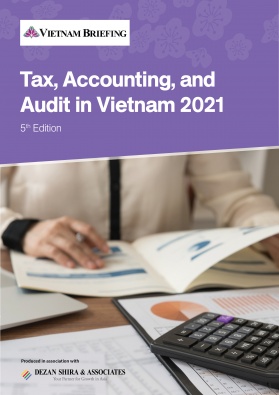Q&A: How BEPS 2.0 is Reshaping the Global Tax Landscape for Multinational Enterprises in Asia
The new BEPS 2.0 framework aims to ensure that multinational enterprises pay a fair share of taxes where they operate and is expected to have far-reaching impacts on many ‘tax-friendly’ countries and multinational enterprises (MNEs). With a majority of the member jurisdictions agreeing to follow the new framework including, Mainland China, Singapore, Hong Kong, India, and Vietnam, how will it affect the global tax landscape and companies’ tax strategies?
MNEs within the scope of the new international rules (those doing customer-facing businesses and digital service businesses or those above CbCR revenue threshold) need to monitor the most recent tax developments and assess how they impact their overall tax burden and the necessity for group restructuring.
Recently, Thang Vu, Associate Manager, Tax, at Dezan Shira & Associates’ Ho Chi Minh City office, shared updates in a webinar on tax developments in Vietnam and how BEPS 2.0 will affect businesses in Vietnam. Due to the high interest in Vietnam, we have shared a few snippets of the webinar below.
For an in-depth analysis, readers can view the webinar here.
Can you tell us about the recent tax developments in Vietnam?
Most recently, Vietnam has brought out new regulations on the enforcement of tax administration and new rules on transfer pricing.
The tax administration regulations as outlined in Decree 126 mainly affect online traders and those in digital commerce such as Netflix, movie streaming websites, and gaming platforms. Previously the government only imposed withholding tax on Vietnamese companies who were involved with overseas companies.
Now overseas companies have to register to get a tax identification number and pay taxes on Vietnam-sourced revenue. The tax authorities have also imposed enforcement measures to enforce tax administration on e-commerce activities. Banks are obligated to report on payments made to overseas entities, particularly to foreign contractors and companies. While we are not sure of the consequences if companies do not comply, the government might take severe measures like blocking the IP address of the website that flouts the rules. The government is also likely to carry out tax audits and tax inspections of e-commerce entities that do not comply.
The second major development is new rules on transfer pricing regulations. The main purpose of the new regulations is to tighten the arm’s length range from the 35th percentile to the 75th percentile and also retrospectively apply back to the 2020 financial year. In addition, the net interest deductions (net of interest expenses less interest income) are capped at 30 percent. The OECD advises between 10 percent and 30 percent rules apply to all local and FDI companies. In fact, FDI companies are subject to stricter scrutiny than local companies due to the tax authority’s limited ability to exchange information with other tax jurisdictions.
What’s the impact of BEPS 2.0 on common structures?
To address the base erosion and profit shifting (BEPS) risks arising from the digitalization of the global economy, the Organization for Economic Cooperation and Development (OECD) issued a statement on July 1, 2021, on reworking the framework for international tax reform.
Commonly referred to as BEPS 2.0, the new framework aims to ensure a fairer distribution of taxing rights is established with respect to the profits of large MNEs and to set a global minimum tax rate.
The BEPS 2.0 package consists of two parts, which is also called the two pillars:
- Pillar One is focused on profit allocation and nexus; and
- Pillar Two is focused on a global minimum tax.
There are three types of common structures that may be no longer be tax-efficient due to BEPS rules in Vietnam.
The first is a Phoenix company which is used to exploit certain tax benefits. A Phoenix company is set up to avail tax incentives for a certain amount of time. It is then closed down and set up again with the same business structure to obtain time-based taxed incentives such as four years of tax exemption. However, BEPS would make this redundant.
The second is tax havens. Tax havens are jurisdictions that have very low rates of taxation for investors such as Panama. However, with BEPS you would still need to pay taxes in the country where business is carried out. Pillar one of BEPS 2.0 necessitates that MNE groups pay taxes where they have users regardless of commercial presence.
The third is tax incentive regimes. With BEPS, if a business enjoys tax incentives in Vietnam, they would still be subject to taxes where the parent country is headquartered.
Can you give us an overview of tax incentives in Vietnam?
Vietnam has several tax incentives that appeal to investors. Location-based incentives apply to qualifying economic and high-tech zones, certain industrial zones, and areas with difficult socio-economic conditions. Industry-based incentives are applied to several industries such as education, software, high-technology, renewable energy, and others.
Vietnam also has preferential tax rates such as a flat lifetime tax rate of 10 percent for socialized projects in certain areas with difficult socio-economic conditions as well as a flat lifetime tax rate of 15 percent for agribusinesses. Businesses can also obtain tax holidays such four years of tax exemption and 50 percent reduction for the next nine years.
About Us
Vietnam Briefing is produced by Dezan Shira & Associates. The firm assists foreign investors throughout Asia from offices across the world, including in Hanoi, Ho Chi Minh City, and Da Nang. Readers may write to vietnam@dezshira.com for more support on doing business in Vietnam.
We also maintain offices or have alliance partners assisting foreign investors in Indonesia, India, Singapore, The Philippines, Malaysia, Thailand, Italy, Germany, and the United States, in addition to practices in Bangladesh and Russia.
- Previous Article Vietnam Seeks Business Deals, Agreements on Sidelines of COP26
- Next Article Vietnam-China Trade: Transport Ministry Proposes Update to Railway Link







